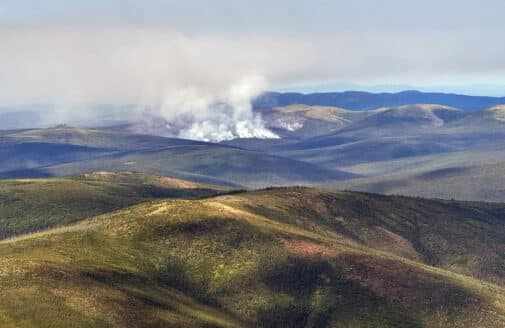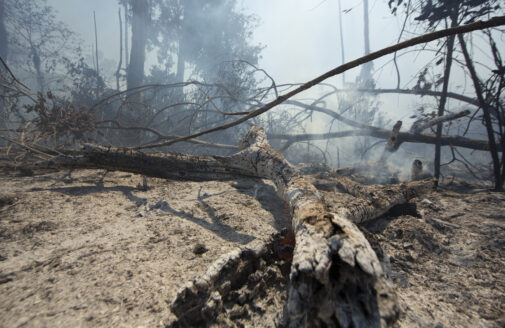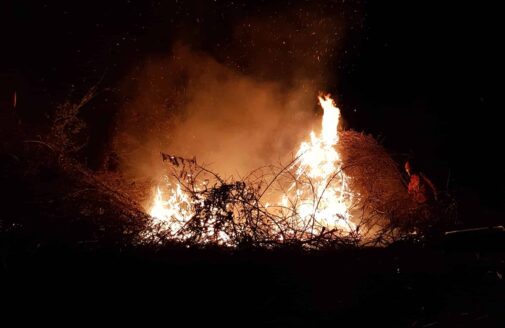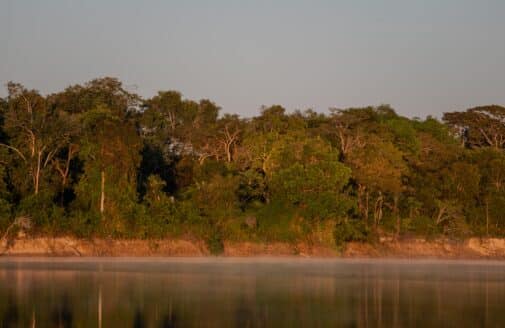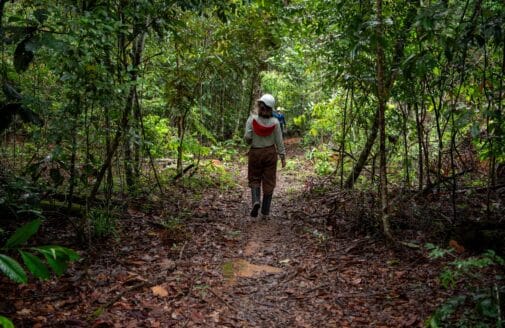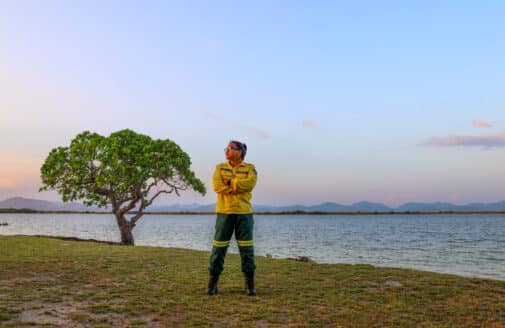How climate change is allowing fire to devastate the Amazon Rainforest
Humans create the conditions for runaway fires
Fire burns among Amazon vegetation.
photo by Illuminati Filmes
In the Amazon Rainforest, there is no such thing as a natural fire. Yet every year we see headlines of rainforest vegetation aflame, smoke drifting across populated areas, and stored carbon spilling into the atmosphere. So how does a rainforest—one of the wettest ecosystems on Earth—catch fire?
Climate impacts on Amazon fire
Whether directly or indirectly, human activities are the root cause of fire in the Amazon. In order for a fire to start anywhere, you need three things— favorable climatic conditions, a fuel source, and an ignition source. In the Amazon, each side of this “triangle of fire” has been exacerbated by warming temperatures and deforestation, creating flammable conditions that can allow fires to spread out of control deep into the forest once they are ignited.
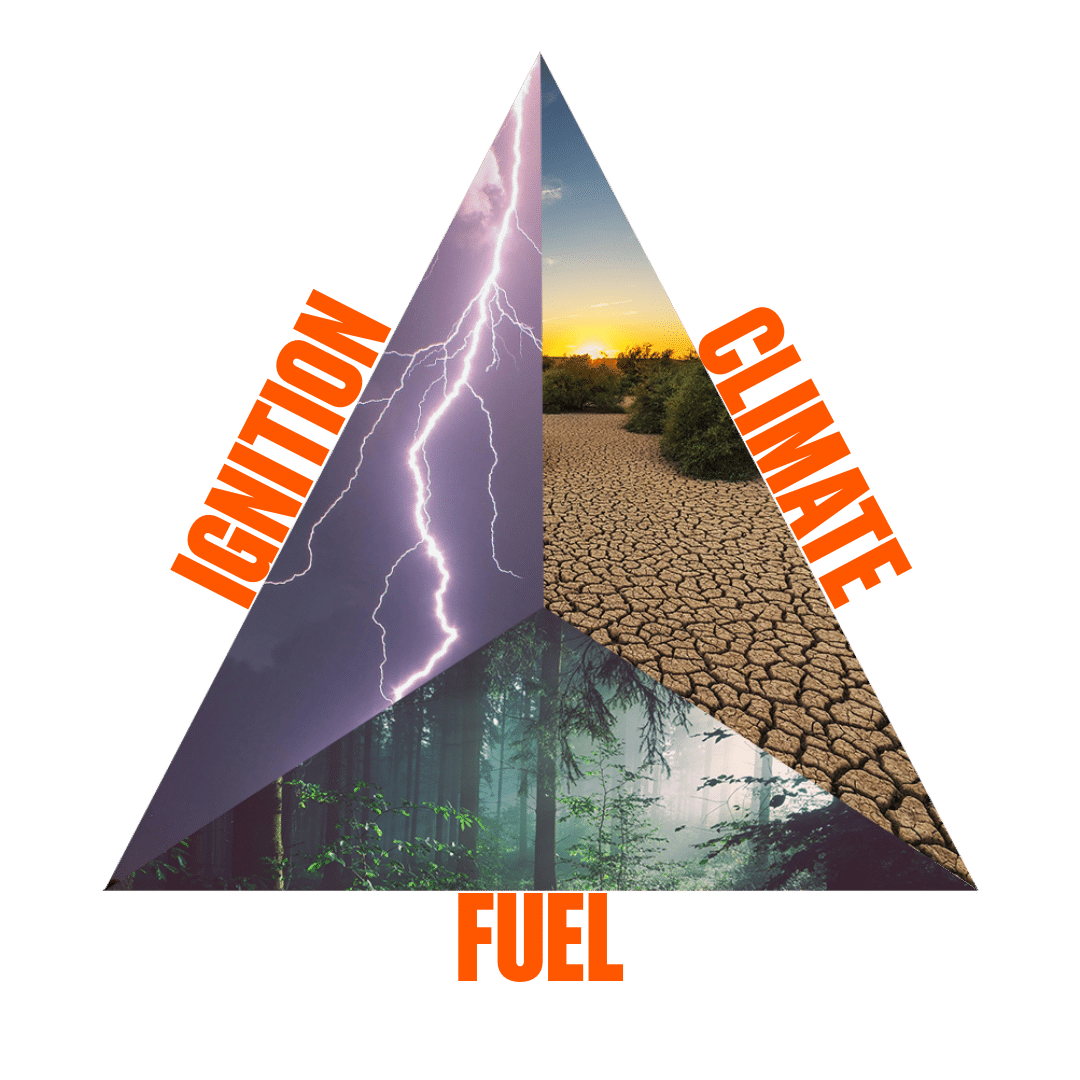
graphic by Tommy Hillmer
Climate conditions
High temperature and dryness combine to create the right conditions for fires to spread through the Amazon. As global temperatures have risen, the Amazon region has become hotter and drier, more vulnerable to prolonged droughts and extreme climatic events. Most recently, a climate-driven drought spanning 2023 and 2024 has deeply impacted water levels in the forest— to the point of isolating riverside communities.
Wildfire danger days, or days considered hot and dry enough to increase the likelihood of fire, have become a much more common occurrence deeper in the Amazon, where previously it was just too wet to burn.
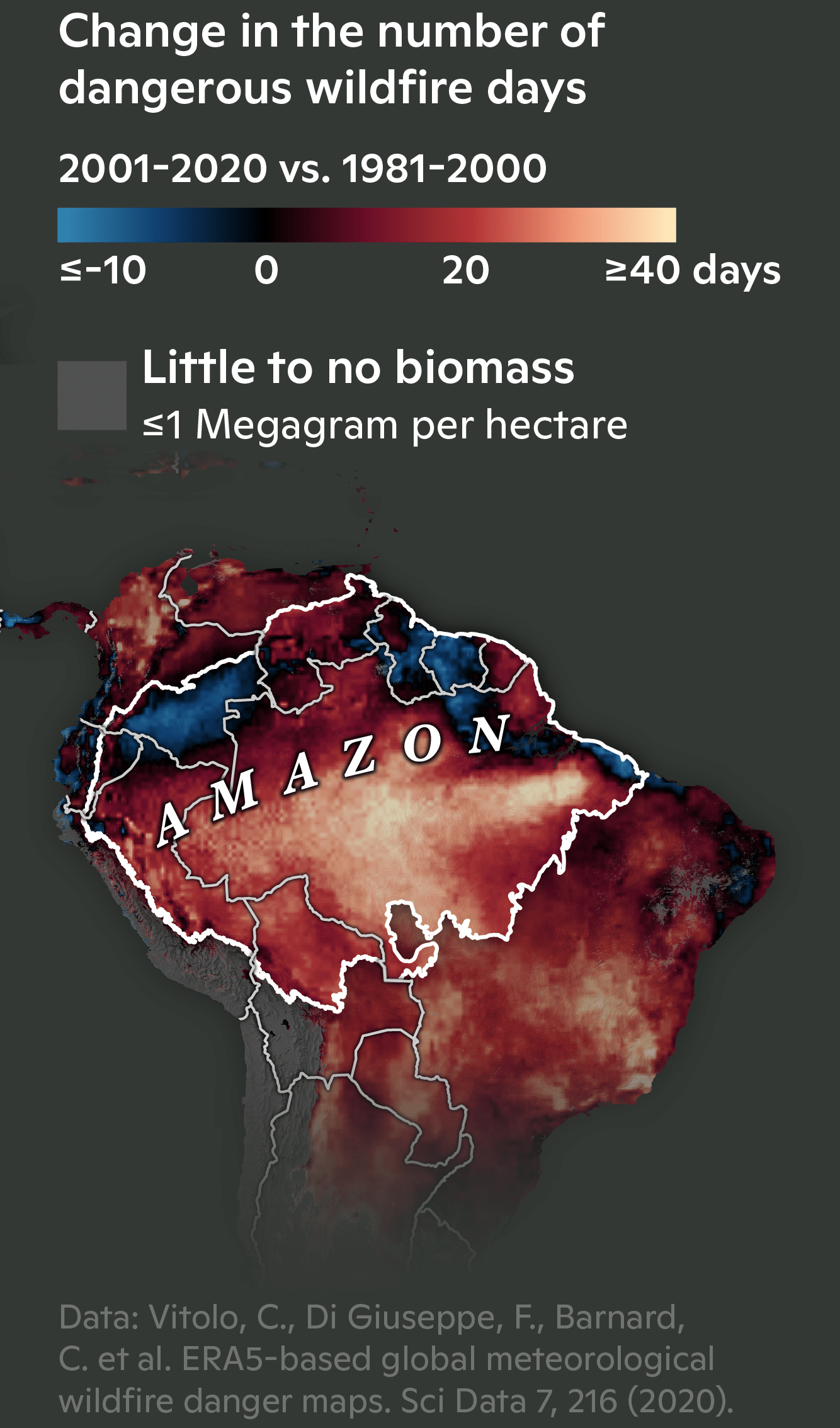
map by Christina Shintani
Fuel
Felled trees and dry vegetation form the fuel for more fires in the Amazon. How do the trees fall? Some are killed in extreme drought and previous fire, but many are intentionally cut, pushed over by bulldozers for conversion of forest to pasture land. Large-scale deforestation has been advancing into the Amazon for decades, fragmenting thick blocks of forest and replacing them with ranch or farm land. Scientists and activists have been pushing for an urgent stop in deforestation to achieve, among other benefits, a drop in fire numbers. However, despite slowly declining deforestation rates, fires are still increasing, pointing to another important piece of the puzzle–degradation.
When a forest is fragmented by deforestation, it degrades the vegetation that remains standing. Forests along the edges of clearings dry out and weaken, making them more susceptible to future burning. And burning weakens nearby forests yet again, creating more available fuel, setting off a chain of degradation.
Ignition
Ignition in the Amazon is almost entirely human caused— whether accidentally or intentionally. Ranch and farm operations both legally and illegally clearing Amazon rainforest use fire to burn away cut vegetation or prepare existing pasture land for other uses. With climate change creating hotter and drier conditions, and lengthening the dangerous dry season, any ignition becomes potentially risky, whether or not its use is legalized. Especially where forest edges have already been weakened.
However, a study led by Woodwell Climate Postdoctoral Researcher and fire ecologist Dr. Manoela Machado, found that long-term solutions to the Amazon’s fire crisis will require distinguishing between the complex uses of fire. One-size-fits-all fire bans, usually employed as emergency measures and not always strictly enforced, may reduce fire in the short term, but don’t adequately address the underlying reasons people have decided to burn the land.
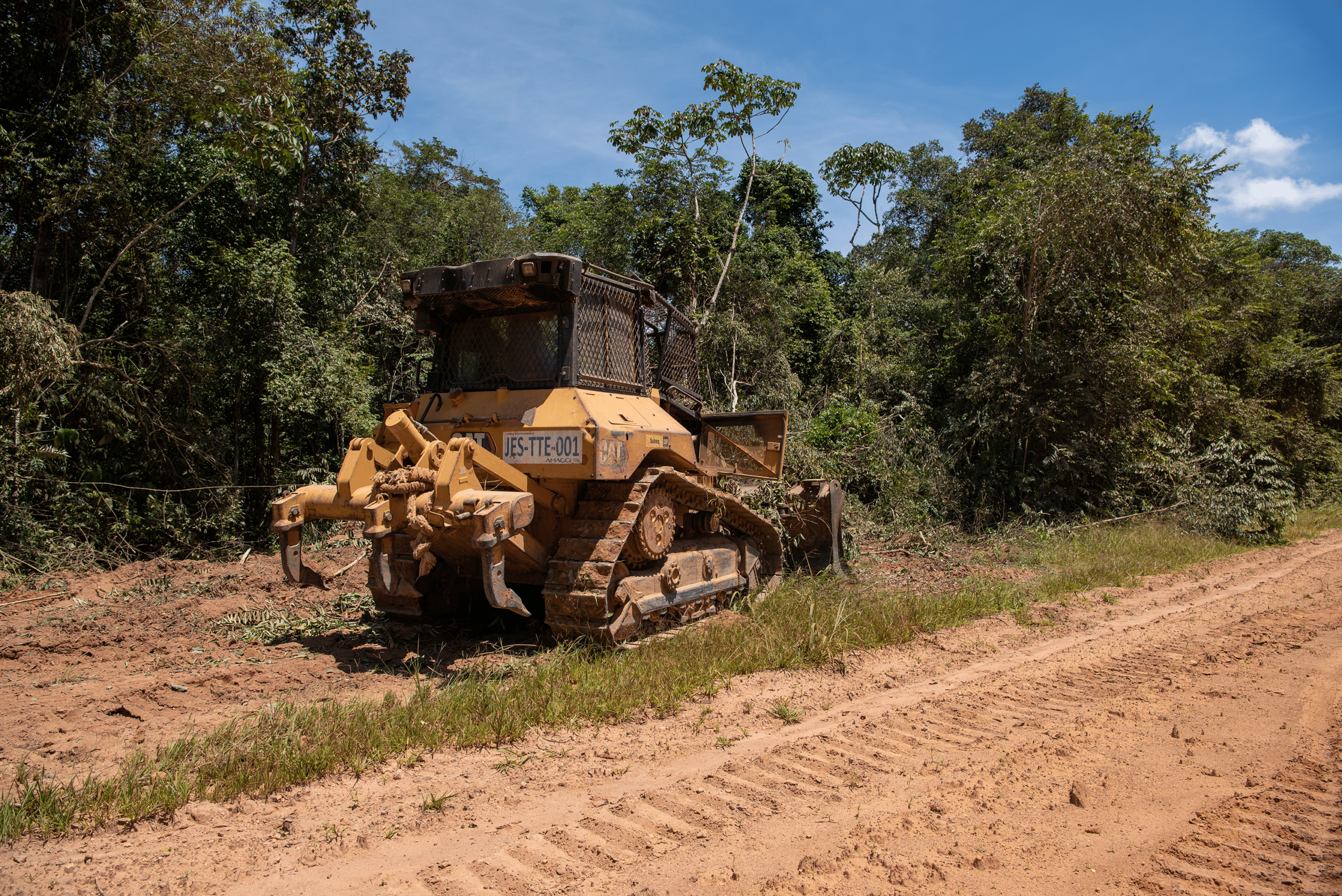
Bulldozer widens a road on a farm in the Amazon.
photo by Mitch Korolev
Ending deforestation and supporting firefighters
Fire in the Amazon follows deforestation and degradation, namely from logging, fires, droughts and fragmentation. Climate change and human encroachment have worked in concert to foster a devastating annual burning regime in the Amazon rainforest that threatens one of the Earth’s most valuable mechanisms for keeping the planet cool.
Eliminating fire from the Amazon will require the elimination of deforestation and degradation sources, as well as the enforcement of strategic fire bans and support of firefighting brigades. Machado, has led several successful workshops with Indigenous fire brigades in Brazil, bringing together groups from across the country to learn about Geographic Information Systems (GIS) technology they can use to monitor and manage their own forests.
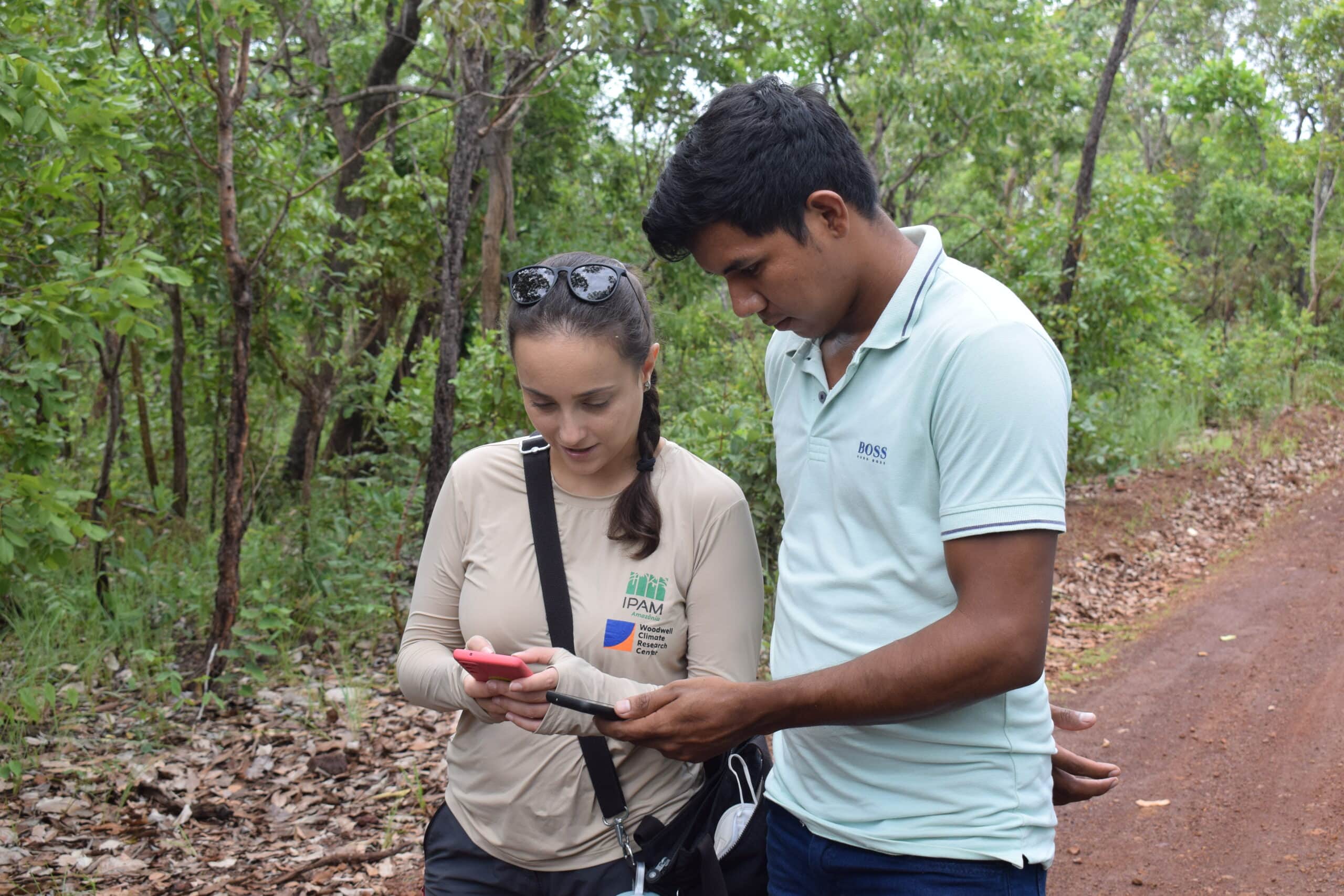
Machado helps a workshop participant during a field exercise.
photo by Sara Raira Leal Pereira
According to Machado, a big part of fire prevention happens in the off-season. Support for activities like community outreach, building fire breaks in collaboration with farmers, and technical assistance to replace legal use of fire, can all help reduce the prevalence of catastrophic fires when the dry-season comes around.
The Amazon is a massive place, and firefighting can be a dangerous job. Especially on the frontiers of deforestation, where land grabbing and illegal deforestation are common and fire fighters are often threatened to stay out of an area. Ultimately, government support, bolstered enforcement of deforestation laws, and viable alternative livelihoods have a major role to play in bringing down fires, alongside continued global efforts to curb climate change.




